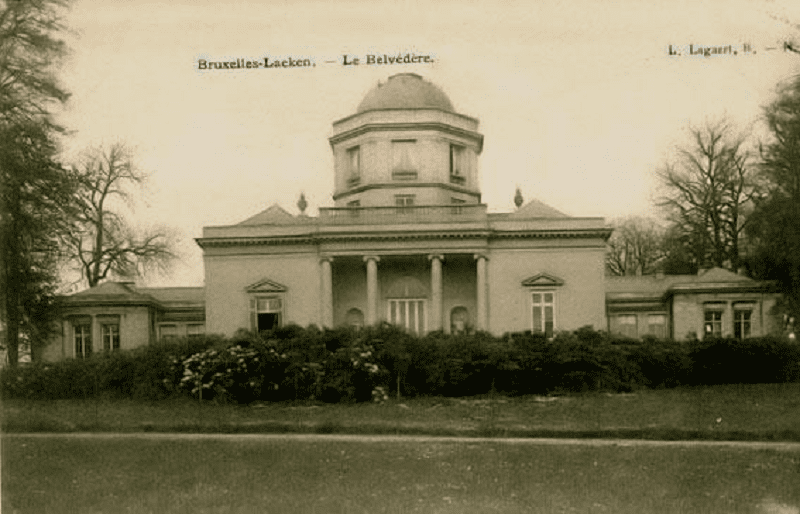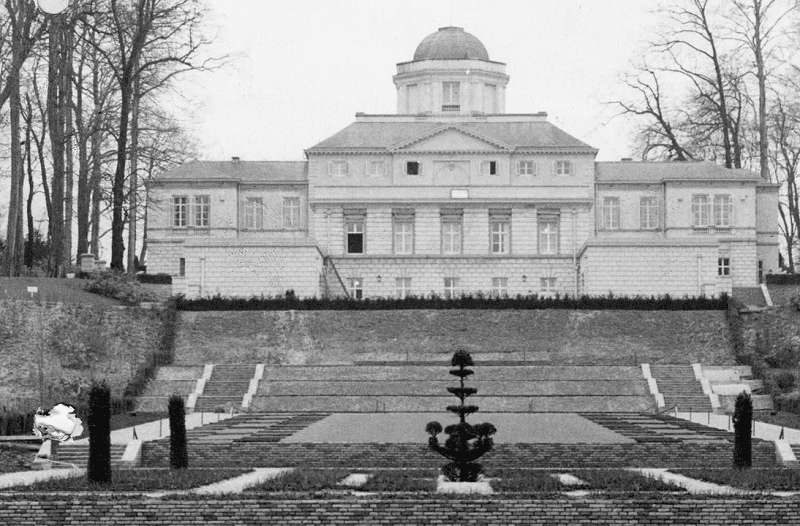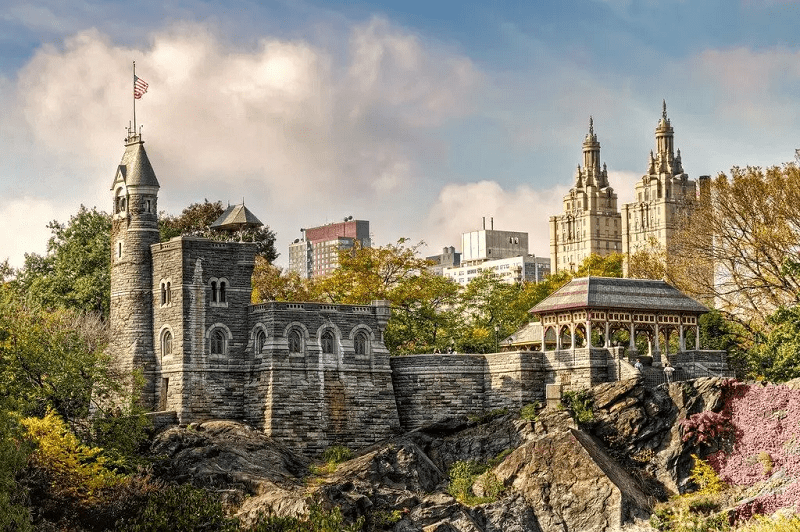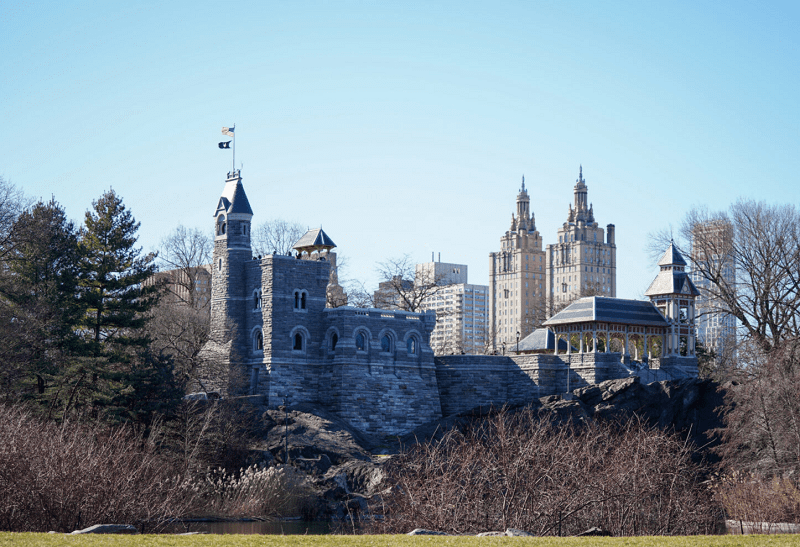Belvedere Castle (hereinafter the Castle) for Manhattan has become an important part of Central Park (CP) in Manhattan, NYC. The folly has exhibition halls and an observation deck. Since 1919, an official weather station has been placed in the heart of CP. Read more on manhattan-future.
The edifice’s project was designed by C. Vaux and J. Mould, and was finally completed in 1867. An architectural blend of Romanesque and Gothic styles was employed to produce the folly of Manhattan. Based on the project, it was to be a construction made of slate and granite. Furthermore, a corner tower and a conical roof were erected with a viewing platform underneath. The phrase Belvedere Castle is of Italian origin and roughly interpreted it means marvelous sight.
History of the folly’s planning and development
The architects C. Vaux and J. Mould were faced with a difficult task: according to the Greensward Plan, there should be an extra feature that supplements the key points of the plan. The plan was the responsibility of C. Vaux and F. Olmsted, who were rehired in 1865 after having been dismissed for reasons unknown at the time a few years earlier. In 1867, C. Vaux continued to address the development of CP.
The folly of Manhattan was erected here on one of the bluffs facing the Croton Reservoir. A fire tower was erected on the site of today’s edifice. It was controlled by the Croton Aqueduct. As a result, the developers opted to remove the fire tower.

[Photo source: https://en.wikipedia.org/]
The first plan consisted of two stone towers with turrets: a taller stone formation on the east end and a shorter formation on the west side. Later, Tammany Hall took over the final stage of the project. It decided to revise the original plan for the edifice in November 1870, with the main goal of reducing construction costs. So the final appearance of the edifice was as follows: an open and painted wooden pavilion, and the design used was by Mould. The eastern stone section of the Castle was eventually finished in 1871, whereas the western section was left incomplete.
Automation of meteorological equipment in the Castle
In the 1960s, the New York City Meteorological Observatory (NYCMO) began a long process of automating its systems. With that, it decided to move its offices to Rockefeller Center. At the same time, the folly was damaged by vandals, so it was decided to close it to the public for a while.
The edifice’s reconstruction was undertaken by the Central Park Conservancy (CPC). Their joint efforts helped to achieve a neat appearance for the Castle. The edifice finally became open to the public on May 1, 1983. The restoration project, which was developed by the CPC, consisted of a complete replacement of the original tower. The pavilions were entirely renewed. So, the folly of Manhattan was turned into a visiting hub. In 1995, a further alteration was performed. It consisted of replacing the painted wooden loggia of the Castle, all of which had to be done by the historic preservation team. The procedure was adapted from the plans of the Manhattan folly of the 1860s, which were still available at the time.

[Photo source: https://en.wikipedia.org/]
In 1995, a grant of $340,000 was allocated. The principal use of this sum was to refurbish the structure to make it the Henry Luce Nature Center. The renovation took nearly a year and was finished in 1996.
Project of the Castle’s second reconstruction
In 2018, a project for the second reconstruction of the folly was created with the support of the CPC. According to it, the edifice was supposed to replace the existing doors and windows with double glazing. Additionally, the CPC’s intent was to phase in a new trail that would allow ADA compliant access from East Drive. It is also worth noting that the design of the folly of Manhattan has been repeatedly criticized. For instance, the entrance road, which was in fact a steep ramp with parapets, was considered to be a needless obstacle that disturbed the naturalist park.
In general, the reconstruction has been underway since 2018. The allocated amount for the second reconstruction project was $12 million. Construction of the facility was finished on June 28, 2019. It was revealed to the people at that time. One of the major upgrades was the geothermal heating and cooling system added by the CPC.

[Photo source: https://topdogtours.com/]
The edifice was initially constructed to study the weather. Actually, the central tower of the edifice had a more medieval look, with a weather antenna at the top of the structure. Following the first renovation in 1983, the tower was substituted by a German-style tower with a flag, a weather vane and an anemometer. Two quaint half-timbered wooden pavilions are also part of the Manhattan folly. However, without some care, they quickly fell into disrepair. They were taken out of the edifice in the 1900s. The refurbished pavilions were not moved back until the 1980s.
In 1919, Belvedere Castle itself began to house the aforementioned NYCMO. It was later transferred to the National Weather Service. The weather station in the middle of CP continued its work in the Castle, applying the Automated Surface/Weather Observing Systems (ASOS). This system is on the south side of the main building. The wind equipment continues to be on the main tower of the structure.
Nearby is the eastern elevation, which used to be in contact with a rectangular receiving tank. All of this was combined into a common system of the Croton Aqueduct. However, due to the construction processes in this area, this reservoir is covered with debris. There are also construction parts from the Eighth Avenue line of the NYC IND subway (trains A, B, C and D run on this subway line).

[Photo source: https://www.centralparknyc.org/]
The folly of Manhattan in the 20s of the XXI century
The folly overlooks Vista Rock, which is a 40-meter-high outcrop of shale that has made it the second highest natural elevation in Manhattan’s CP. A convenient tunnel was built next to this prominent feature of the CP in the city. Its primary use is to enable commercial and other types of transport to cross the park undetected. Generally, this architectural approach allowed the traffic system in this part of the city to be decoupled and integrated into a single system.
In the 20s of the XXI century, the folly of Manhattan is the main center for visitors. The edifice is a so-called souvenir shop. The Castle is ideal for family trips through it. The administration has developed free family and social programs that feature urban bird watching and other fun events. Families attending Manhattan’s CP may participate in an array of history and natural history activities conducted by city park rangers. You can also immerse yourself in astronomy by stargazing.